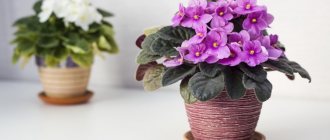If you learn how to grow lilies at home, you can constantly enjoy their beauty. For a long time it was believed that these plants come from the northern hemisphere, but this flower was described in Ancient Egypt. At that time, such flowers represented the divine power of the gods, especially the god Horus, who was believed to have given birth to Egyptian civilization. Lilies were so valuable that only kings used them to decorate their palaces. Since the Middle Ages, they have represented purity and chastity, as well as feminine beauty.
Description
A home lily in a pot (a photo of the plant is presented below) is not uncommon today. Many varieties have been developed that decorate any room with their bright, large flowers. Indoor plants can create a cozy atmosphere. A spectacular lily will also become a real highlight of the interior. In addition, during flowering, many varieties emit a pleasant, delicate aroma that spreads throughout the room.
Most often, Asian and Oriental hybrids grow at home. They are fully adapted to life in a pot. Such plants produce a minimal number of shoots, so they do not require replanting for a long time.
It is worth noting that a rather unpretentious plant is a lily in a pot. Care at home does not require much effort and time. However, by adhering to certain rules, you can achieve abundant flowering, which will occur at the right time for you. Large buds can be cut to create spectacular bouquets for various celebrations. The flowering period directly depends on the time of planting.
The house lily can reach a height of 1.5 m. You can also grow relatively small, compact bushes that will not take up much space on the windowsill. The height of the stem depends on the variety. The pot is selected according to the characteristics of the plant. If it is high, then the container should be large and stable. It is recommended to choose a pot with a wall height of up to 40 cm if the lily reaches a height of up to 150 cm.
To plant one lily bulb in a pot you will need at least 15 cm² of space. Therefore, 3 onions will fit in a container with a diameter of 45 cm. Usually only one lily is not planted in one pot. This is impractical, since in this case the lily begins to grow a large number of shoots. Until all the space in the pot is occupied, the lily will not bloom. For a single planted bulb, this may take years.
Lily in a pot
Caring for a potted lily is not difficult; its agricultural technology is as simple as that of flowers grown in open ground. For tall lilies, pots and flower boxes will be cramped, but if you choose the right variety, these flowers will decorate window sills, balconies and verandas.
Lilies in a pot
Indoor bulbous lily
An indoor lily can be grown to a height of up to 1.5 m, but this is not recommended, since it will be uncomfortable for the flower, and it will require much more care than low-growing varieties. Among them you can also choose spectacular options. People usually pay attention to oriental varieties; for growing at home, they should be given preference over Asian indoor lilies.
For your information! There is another home flower that looks like a lily - amaryllis.
White lily home
When talking about the white house lily, they most often mean eucharis. This is a member of the Amaryllis family. Since this flower grows in the wild in South and Central America, eucharis is often called the Amazon lily. The external signs of the plant are as follows:
- highly decorative bright green leaves;
- height together with peduncles at home reaches 70 cm;
- flowers with a diameter of 10-12 cm, but you can also choose a large-flowered variety;
- flowers are collected in inflorescences;
- the Amazonian variety has a delicate delicate aroma;
- the diameter of the bulbs is 5 cm, the root system is powerful, so the growing pot must be large in diameter;
- With proper care, eucharis blooms twice a year.
Note! The juice of the plant's leaves is poisonous, so it should be kept away from children and pets.
White lily home
Asian indoor lily
The Asian indoor lily is a hybrid developed by plant breeders in the 1950s. It is unpretentious to grow and looks the same at home as it does in open ground. In total there are more than 1500 varieties. The most popular of them are the following:
- Marlene. The height of the plant reaches 1 m, flowering is abundant, occurring in early and mid-summer. The variety has a powerful light green stem, leaves 13-15 cm long. Since the variety is a hybrid, due to some mutations, several dozen buds can form on one stem, but this does not always happen. Sometimes lush flowering begins only in 2-3 years. The flowers reach 20 cm in diameter. The petals are delicate in color, gradually turning pink from the base to the tips;
Variety Lionheart
- Lion Heart. Medium-sized variety. The length of the stem reaches 70 cm. Each stem produces about 10 flowers with a diameter of up to 15 cm. A special feature is its unique color. The petals are bright yellow at the base and tip, and purple, almost black in the middle. The stem and leaves are sprinkled with purple dots;
- Asian terry. A variety of Asiatic lilies that includes many varieties and can be grown both indoors and in the garden. The stems grow up to 1 m in length, the flowers are very large with a diameter of up to 20 cm. The colors vary depending on the variety.
Terry potted lily
Types of lilies
A house lily in a pot (photo can be viewed below) can produce buds of different sizes, shapes and colors. In total, this species has about 300 varieties. Many of them can withstand quite serious drops in temperature, while others prefer to grow in a warm room.
Some types of house flowers are very similar to garden plants. This is especially true for varieties such as amaryllis and hippeastrum. Their blossoms fascinate with their beauty. Such lilies become a decoration not only for window sills, but also for loggias, balconies, winter gardens, and galleries.
Flowering lasts long enough, which cannot but please the owners of the plant. The buds can be very large. They can be painted in red, orange, white, and golden shades. The purple colors of lilies are also interesting. The choice of such plants is huge. The buds can be gramophone-shaped or have fringe. Shades can replace each other on the same plant. The petals may have a white edge, smoothly change color from red to yellow, etc.
Lily has significant decorative qualities. When choosing a variety for cultivation, you need to study its preferences for growing conditions. Some varieties are suitable for a cold loggia, and others for a window in a warm room.
One of the most popular varieties of home lilies in a pot is Apollo. This is a white lily, the diameter of whose flowers reaches 12 cm. They grow in lush clusters, resembling dazzling white bells. They symbolize purity. This variety of flowers also has healing qualities. Tinctures from white lily are used as an analgesic, wound healing agent, and also in the treatment of hematomas.
How to plant lilies
Many gardeners are wondering when and how to plant lilies so as not to harm them and ensure even more luxuriant flowering. Since daughter tubers periodically appear on the tubers of these plants, at this moment the problem arises of how to plant a lily and replant it correctly.
Transplanting indoor lilies
Varieties whose bulbs are sent to the refrigerator or cellar for the winter are, in any case, replanted annually. But those that constantly grow in one place need to be replanted once every two to three years. A more spacious pot is selected, work is done with the roots: excess, shriveled and rotten parts are cut off.
How to plant lilies in autumn
How to plant a lily in the fall in such a way that no changes occur to it during the winter, and it safely survives the dormant period? Just. Autumn is the optimal time for planting these flowers both in open ground and at home. But it is still worth carrying out this process as carefully as possible. The damaged plant will survive, but will not bloom in the next season.
Note! The lily should bloom and rest a little, only after that its bulb can be dug up and carefully examined, cleaning and removing all damage. Then carefully separate all the daughter bulbs and keep them for half an hour in a weak solution of karbofos or potassium permanganate. Then dig holes that are the size of the separated tubers and transplant them there. Just sprinkle damp soil on top.
When and how to divide lily bulbs
It is believed that the time when lilies can be divided is exclusively spring. But that's not true. You can do this in August - September. The division is very simple: the small children that appear on it are separated from the adult tuber, and they are seated in the same way as adult plants.
Lily originally got its name from the ancient Greek “li-li”, which means “white-white”. But the breeders did their best, and now there are a great variety of colors. An equally pleasant fact is that it is now possible to grow them indoors, and this is not a difficult process at all. In any case, it’s very nice that these flowers can now decorate not only your garden plot, but also your balcony or windowsill.
Planting bulbs
To plant a lily in a pot, use the bulbs or seeds of the plant. The first option is the only one possible for white flower varieties. Not all varieties of lilies can grow from seeds.
Planting the bulb in a pot should be done in the first days of spring. In this case, the lilies at home will bloom throughout the whole summer. Only healthy bulbs are suitable for planting in the ground. They should not have any defects or rot.
You can plant several bulbs of the same or different varieties in one pot. In the second case, the composition will be original. The rules of care in this case will be the same as for one type of flower.
Types and varieties of indoor lilies
There are about 300 species of lilies in the world, which are divided into main groups:
- Cupped. Petals of this type are presented in the shape of a bowl - wide open. Cup-shaped varieties include: gilded lily, Empress Lily of China, Grand Commander.
- Funnel-shaped. The petals are tightly packed and form a tube. Funnel-shaped lilies include Long-flowered, Regal, Royal Gold, as well as a dozen hybrids that differ in a wide variety of colors: from light yellow to bright orange shades. This species includes the most planted lily - the indoor lily.
- Fez-shaped. The flower consists of bent petals. Fez-shaped plants have a low stem and small flower diameter. Lilies such as Dwarf lilies, beautiful species and L. Citronella belong to the fez-shaped lilies.
In addition to the above varieties, there are Asian, American, Oriental lilies, as well as Tubular hybrids, Candidum hybrids, La hybrids, etc.
Each species has its own characteristics that are responsible for resistance to low temperatures and other unpleasant weather conditions.
Landing in the ground
Lilies grow well in light soils. You can add clean river sand to the soil. You need to add a layer of drainage to the bottom. The prepared nutrient substrate is poured onto it. Several bulbs are placed in the container, straightening the roots. They are only half covered with soil. The pot should also not be completely filled. It is filled with soil to the middle of the container. As the shoots grow, the soil will need to be added.
Next, the pot needs to be taken out to a cool, dark place. When the sprouts begin to emerge from the ground, you need to take the container to the windowsill. It should be quite light and warm here. This plant loves fresh air, so it would be advisable to grow it on a loggia or balcony. However, drafts should not be allowed.
Choosing lilies for indoor growing
In rooms you can successfully grow either varieties specially bred for indoor cultivation or compact varieties that hardly produce children. Lilies that grow well indoors include:
- special “potted” varieties of royal lily (Lilium regalum);
- varieties of beautiful lily (Lilium speciosum);
- varieties of long-flowered lily (Lilium longiflorum);
- varieties of golden lily (Lilium auratum);
- potted varieties of the Mid-century group of oriental and Asian hybrids.
It is worth giving preference to dwarf or low-growing varieties (40-60 cm is the optimal height) and the most unpretentious, early varieties. The color scheme is chosen according to taste.
For indoor culture, large (from 40 g), healthy bulbs are used - the best, selected specimens.
Royal lily (Lilium regalum). meolongxu87 Beautiful lily (Lilium speciosum). Stefano Long-flowered lily (Lilium longiflorum). Nobuhiro Suhara
Growing from seeds
Lily at home can be grown from seeds. They can be collected from the plant or purchased seed from the store. This method is considered the safest, since such lilies are much less susceptible to disease.
A seed capsule appears on the plant after flowering. It contains about 200 seeds. The length of each grain is about 5 mm and the thickness is 1 cm. You can sow them in the ground in the same year in which they were collected. However, experienced flower growers advise not to rush into this. It is better for the seeds to lie in the refrigerator on the bottom shelf for some time. This way the probability of germination will be higher and the plant will be stronger.
The house lily is sown in a pot at the end of March. The seeds hatch quickly. Therefore, by planting the seeds earlier, you will need to provide the plants with additional lighting.
It is best to use a purchased universal substrate and small seedling boxes for planting. Seeds need to be sprinkled on prepared soil. Each grain should be at least 1 cm apart from each other. They should be covered with a layer of sand on top.
The seeds are watered and the container is covered with polyethylene film or glass. The container should be taken to a dark but warm place. Here the seeds will germinate in about 3 weeks. It is necessary to maintain a temperature of about 22 ºС. Watering at this time should be moderate.
As soon as the first shoots appear, the container must be taken out and brought into the light. Now lilies need light for 12 hours. The seedlings are left on the windowsill, but care must be taken to ensure that the young shoots are not exposed to direct sunlight. At this time, lilies are very tender and susceptible to adverse factors. The sun can leave burns on the leaves.
When the seedlings have two leaves, they are picked and transplanted into a large pot. Such a plant will bloom no earlier than in 2 years.
Problems when growing indoor lilies
Often lilies refuse to produce buds or their greenery turns yellow and dries. This occurs not only due to disease, but also due to improper care. Common causes of problems are temperature changes, insufficiently moistened soil and air, lack of nutrition, unsuitable containers, and lack of a rest period.
Why does the indoor lily not bloom?
Indoor lily without flowers
Buds may not appear for the following reasons:
- Lack of moisture in the ground and air. Care - water and spray the plant more often.
- Changes in temperature, which leads to rotting of the bulbs. Keeping lilies in a room with a constant mild climate will help to avoid this.
- Lack of light and fresh air. The solution is to move the lily to a well-ventilated area with bright, indirect light.
- The pot is too wide, in which the growth of children and green mass occurs. The solution is to transplant the lily into a smaller container.
- No rest period. Care - in the fall, move the pot to a cool, shaded place.
Why do lily leaves dry out?
Dried leaf of a house lily
This problem is the most common. Changes in foliage color indicate the following:
- Autumn has arrived, so yellowing of greenery is natural. Caring for lilies at home is traditional - preparing for dormancy, keeping the flower in the cold.
- Wet foliage may be exposed to direct sunlight, causing burns. You need to move the pot to a room with diffused light, water or spray the plant in the evening or early in the morning.
- Dry air. Care - place a humidifier and a container of water next to the lilies. In addition, a flower pot can be placed on moistened stones, expanded clay, or moss.
- Lack of nutrition leads to disruption of the process of photosynthesis and suspension of chlorophyll production. When plants are actively developing, nourish them with complex compounds. When caring, mixtures with a high content of potassium and iron are especially recommended: 2 tsp. citric acid + 7–9 g of iron sulfate + 3 liters of cool water.
Features of care
A house lily in a pot will not require much attention. How to care for a plant? It is worth considering a few simple recommendations. You need to water the plant a little, but quite often. In this case, you need to check the soil with your finger every time to avoid excessive soil moisture.
The plant loves to be sprayed with a spray bottle. This helps to increase the level of humidity and also cleans the leaves of the plant from dust. Periodically, the soil will need to be loosened. Humus is poured into it. You can add a small amount of peat.
During the flowering period, you need to support the stem so that it does not break. When considering how to care for a lily in a pot, it is also worth noting that it loves coolness and free space. In this case, the plant will be healthy and beautiful.
The soil needs to be fertilized. The first time this should be done immediately after planting the bulb in the ground. Next, during the flowering period, you need to add fertilizer to the substrate. The last time you need to fertilize is when flowering ends. You can add wood ash to the pot. It strengthens the plant, strengthening its immunity. In this case, the plant’s defenses will increase.
If the lily is growing in a pot, it will not bloom the first year after planting. You need to wait until the plant is ready to please its owners with bright, spectacular flowering.
When the lilies in the pot have faded, you need to cut off the dried stems. They are taken out of the pot and then placed in the sand. It must first be moistened. Then the container must be taken to the basement. Instead of sand, you can use wet moss. If there is no basement, you can leave the shoots on the bottom shelf of the refrigerator.
Diseases and pests
Most often, domestic lilies are susceptible to fungal diseases. Basically, such problems appear when owners are too zealous with watering. In the vast majority of cases, the indoor lily is affected by gray rot. The presence of such a disease is indicated by mold spots on the leaves and stem of the flower. If gray rot is detected, all damaged parts of the plant should be removed. And healthy areas are sprayed with a solution of copper sulfate.
Bulbs can also be affected by a similar fungus - soft rot. This disease is reflected on the tubers in the form of dark, watery spots. At the same time, the bulb becomes soft and covered with mold. A specimen that is too damaged cannot be saved. In case of partial damage, it is possible to restore the viability of the culture. To do this, you need to mix coal with sulfur, remove the onion from the ground and treat it with this mixture. Then put it in a horn solution for half an hour, pull it out and let it dry.
Also, the indoor lily plant can be susceptible to a disease such as mosaic. The first signs appear in the form of clearing along the veins. In the future, such spots become whitish or yellow. Their number is increasing. And as a result, the entire sheet disappears. Occurs due to damage to chloroplasts and destruction of chlorophyll. Tissues are affected at the cellular level. Infection occurs as a result of the transfer of a virus from one plant to another. For example, after using the same tools without disinfection. There are no drugs against mosaic. When this disease occurs, the plant is destroyed.
But complex diseases in indoor lilies, the photos and names of which are presented in this article, rarely occur. Most often, improper care leads to problems with cultivation. Therefore, if you notice any aesthetic deviations in the development of the plant, simply adjust the regime.
Some care tips:
- If the bulb begins to rot, change the soil and reduce the amount of watering. Lack or little drainage can also lead to similar problems.
- If the plant has turned yellow or dull, it may not have enough moisture. In this case, the number of irrigations should be increased.
- At home, lilies are rarely affected by insects. But, if this does happen, treat the plant with a special preparation.
Growing and caring for indoor lilies is not difficult and interesting. With proper planting and care, the plant will delight you with beautiful green leaves and large bright buds.
Transfer
A lily in a pot can be replanted if necessary. The plant does not need this procedure very often. However, this will need to be done once every 3-4 years. After all the buds fall off, you need to leave them until they dry completely. The stems of the plant should turn yellow. You cannot cut them until they are completely dry. Watering is reduced to once a week.
When the soil is irrigated, this procedure is combined with fertilizing. For this purpose, organic and mineral fertilizers are used. You cannot spray the leaves at this time. All forces accumulated by the foliage must go into the bulb. Flower buds will form here. They will bloom in the next growing season.
When the above-ground part is completely dry, watering should be stopped altogether. After 2 weeks, it may be possible to dig the bulbs out of the ground. You cannot leave a lily in the same soil. The soil in the pot is already depleted, which will not allow the bulb to develop properly. Only in a new nutrient substrate will it be able to take root.
Then you need to remove the earthen lump from the pot. It is carefully disassembled, taking out the onion. If there are individual shoots, they should be immediately transplanted into a separate container. Large onions should be washed with warm water. The shoots are cut at a height of 5 cm from the bulb. The planting material must be placed in a container and filled with a solution of potassium permanganate for 30 minutes.
Then the bulbs are removed and dried in the open air for 2 hours. At this time you need to prepare sawdust or moss. They are slightly moistened and transferred to a plastic bag. Lily bulbs are mixed with this filler. The bag should be left in the basement or on the bottom shelf of the refrigerator. They are stored in this form until the next planting.
Eucharis transplant after purchase
Finding eucharis in the store is almost impossible. You can only buy it on forums or local websites, since the plant can only be disturbed during the dormant period, which this plant goes through with its leaves, and there is no way to send it as planting material. As a rule, you can buy this lily directly in the pot. Usually a conscientious seller takes care of the soil and replanting is not required. If you still want to plant the bulb in your pot, then you should do it like this:
Select a pot with a height of 12 cm and the same diameter for one bulb. Be sure to have drainage holes in the bottom. Fill the bottom first with a 3 cm layer of expanded clay, and then with a 5 cm layer of soil in the form of a mound. Place the onion on this mound. Spread its roots in different directions along the surface of the slope
Do this carefully because Eucharis roots are very delicate and fragile. If you are planting a bulb with leaves, then its crown should be 3-6 cm below the top edge of the pot. Cover the bulb and crown with soil so that only the leaves stick out from the ground.
If the onion is small and without leaves, then leave the end of the crown 0.5 cm above the ground. Gently compact the soil around the onion and lightly water it. Water rarely for the first two to three weeks. If it is very hot, then spray the leaves with a fine spray bottle.
Eucharis will not grow and develop if it is not replanted immediately after purchase.
Eucharis usually takes root quite quickly. You will see this from the new leaves that will appear 40 days after planting.
On a note! If you nevertheless bought eucharis in a store, then it should be immediately transplanted from the shipping pot, which probably contains nothing but peat, into a new suitable pot with a complete replacement of the soil.
Hippeastrum and amaryllis
A lily in a pot can be of different types. Externally, the hippeastrum and amaryllis varieties are very similar. However, the characteristics of their growth are different. These varieties have many differences. Outwardly, it may not be possible to immediately distinguish one plant from another. But according to some characteristics, varietal affiliation can be determined.
Amaryllis goes dormant in winter. Flowering occurs in autumn and summer. Hippeastrum behaves differently. This plant blooms in spring and winter. But the dormant period for this type of lily is summer.
It is important to distinguish one plant from another. Each of them needs special care. Amaryllis needs mineral fertilizers. In this case, fertilizing needs to be applied to the soil twice a week. Hippeastrum needs not only mineral fertilizers. The plant also needs to be fed with organic matter.
By following these simple rules, you can grow a wonderful plant that will be healthy and not susceptible to diseases and pests.
During the flowering period, both of these species cannot be replanted. During this period they need high-quality watering. When flowering stops, reduce watering. Both species need sufficient heat and light. However, direct sunlight can harm them. You also need to protect amaryllis and hipeastrium from drafts. Overheating is also unacceptable for them.
How long do lilies bloom?
Amazon lily eucharis - home care
Most house lilies bloom in mid-summer, in July. The duration of the flowering period is 2-3 weeks. The plant emerges from dormancy in late February - early March, buds begin to form in late May - early June. In most varieties, at the end of the flowering period, the above-ground part dies off completely, but not in all. For example, eucharis pleases with its foliage all year round, and it blooms twice. Therefore, it is impossible to give an exact answer to the question of how long lilies bloom. Everything is individual and depends only on the type of flower and proper care.
Important! A domestic lily will be able to bloom with bright, lush flowers only if it is given unlimited access to fresh air and bright sunlight. South windows are best suited.
Dangers while growing lilies
A lily in a pot, like any other plant, is susceptible to some diseases and pest attacks. Fungal diseases are the most dangerous. With proper care, the plant has good protection against such troubles. However, if the watering regime, lighting and other requirements are violated, the plant’s protective powers are reduced.
It is necessary to increase the breathability of the soil. It is loosened periodically. If the plant does become sick, you need to purchase the appropriate type of fungicide. The composition must be used strictly according to the manufacturer's instructions.
If the soil has not been cleaned well enough, various pests may remain in it, for example, thrips and other insects. Effective insecticides are used against them.
Lilies: planting and care
At home, lilies bloom from June to August, and they need to be planted in a pot in early spring.
You can create a composition of lilies by planting several bulbs in a container. For one bulb, a pot with a diameter of 20 cm is enough. The soil should be light, mixed with sand. Drainage in a pot with a lily is required; pour a layer of soil on it, place the bulb on it, straighten its roots and fill it halfway with soil. The pot should be half full. You can add soil when the stems rise above the container. Until sprouts appear, keep the flower in a cool, dark place, but as soon as shoots appear, move the lily to the balcony. In summer, you need to provide the plant with a cool corner where there is air flow. The soil should be moist, as should the air around the plant. You need to water regularly until the fall, until the leaves dry out. The soil should be allowed to dry slightly between waterings. Spray the air around the flower. From time to time, loosen the soil and add wood ash to it.
Do not forget to feed the lily with liquid fertilizers: the first time before growth begins, the second time during the formation of buds, the third time after flowering until mid-August. After flowering, the lilies begin to rest. In autumn, dried stems are cut off just above the bulb; the bulbs are dug up and stored in the refrigerator in winter, wrapped in damp moss, or kept in damp sand in the basement. You can transplant the bulb into new soil, add ash there, lightly feed it and water it, then with the onset of spring it will grow faster.
Lily propagates by seeds, but artificial pollination is required, and this is a task for specialists. In some varieties, spherical formations grow in the axils of the leaves, which can be planted in the soil and produce bulbs in a year. The easiest way to propagate lilies is by digging them up in the fall. Lilies are susceptible to fungal diseases. The reason is waterlogging of the soil or insufficient drainage. If the plant is sick, treat with fungicides.
CardiocrinumHill grouse
After this article they usually read
Add a comment
Tips for a newbie
In order for the lily to grow healthy, you need to cut off all the buds that have formed in the first year. This will allow the plant to save energy for further development. Otherwise, the lily may die. If the plant begins to look weakened and drooping, the buds are cut off at any age.
If in the summer the lily will be taken out into the air, you need to place it under a canopy. It should not be exposed to precipitation. By following simple rules, you can achieve significant results. The plant will delight you with abundant, spectacular flowering. A healthy lily will be resistant to diseases and pests. Delicate, bright or dazzling white buds will bloom on the shoots, emitting a pleasant aroma. They will decorate the interior, creating coziness and comfort in the house.
Caring for lilies at home after flowering
After the buds fade, the leaves and stems gradually die off and turn yellow. The plant goes into a dormant period. Experts do not recommend removing foliage from indoor plants.
Caring for lilies after flowering involves reducing the number of soil waterings. The soil is moistened once a week. There is no need to spray the stems. Gradually, the nutritional components from the greens will move into the bulb. After the stems dry out, soil moisture stops.
In the autumn-winter period, the bulbs are stored in a bag filled with sphagnum or moistened sawdust. The package is placed in the cold (in a warehouse, in a refrigerator). The optimal temperature for storing bulbous plants is +4...+6°C.
Irrigation system
We looked at the basic rules for watering a lily. The system and methods depend on where the plant is growing, in a room or in an open area.
Many gardeners with large garden plots and many plants on them create automatic watering systems. However, not all options are suitable for irrigating lilies.
Automatic irrigation systems include:
- superficial;
- drip;
- intrasoil;
- rainy
The subsoil system is laid under the soil layer. This option is good for many plants, but not for bulbous ones. Since it is difficult to monitor the level of soil moisture from the surface, it is easy to add excess moisture.
Rain and surface systems are also not suitable for many decorative flowers. Splashes of water remain on the leaves and delicate petals. Ultraviolet rays, evaporating moisture, leave burns. This system can be used in the evening and at night, during the warm season.
is best for lilies . This is a gentle and economical irrigation option. Moisture goes directly into the soil without getting on the bushes. The drip system can be connected both to the central water supply and to the tank.
For simple, manual methods, it is recommended to use watering cans to moisten flowers.
They disperse water without eroding areas of soil under pressure. On a note! To retain moisture in the soil on hot summer days and to prevent the surface layer of soil from drying out, it is advisable to mulch with freshly cut grass.
If lily bulbs remain in the soil all winter, they are insulated and not watered until the snow melts from the ground. When the soil begins to dry out under the first rays of the sun, you can gradually resume irrigation.
How to water a lily
How and when to prune lilies after flowering
One of the important things to do with lilies after they have bloomed is pruning. If stems with faded inflorescences are cut off early, immediately after flowering the development and growth of the bulb stops due to the cessation of photosynthesis processes in the ground part. A weakened plant cannot easily tolerate winter cold and should not be expected to be highly decorative for the new season.
Important! It is recommended to remove faded flower stalks from the bush on which seed pods have begun to ripen.
Lilies blooming
You need to cut the stem with sharp tools: a knife, garden pruners, which must be disinfected. To prevent moisture from accumulating on the cut and creating conditions for the development of pathogens, the cut is made obliquely.
Flower beds with wilted lilies look unattractive. To increase their decorative value, drying inflorescences are closed by sowing rapidly developing annual flowers in front of the lily bushes: petunias, marigolds.
The lily has faded - what to do?
When the flower has already bloomed, you can prepare to prepare the plant for winter. However, you should not immediately cut off the stems and leaves! After flowering, the plant gains strength for the winter dormant period. Therefore, it is necessary to give the lily time to fully recover. And cut off the completely dry leaves and stems.
Now you can dig up the bulbs and wash them in running water. After drying, the bulbs can be sent for storage. You can store them directly in the pot until next season.
How to buy lilies
Purchasing planting material is very important - the success of growing lilies depends on timeliness.
Before buying bulbs, or ordering through an online store, you need to find out which group of hybrids the selected flower belongs to, perhaps it’s even a species lily, they require special care. If you are offered lily bulbs of unknown origin, it is better to refuse the purchase - you simply may make a mistake with the choice of location, planting depth and further agricultural technology, but even worse if the lily turns out to be unsuitable for your region in terms of frost resistance.
For example, varieties of LA hybrids or Oriental lilies (Orientals) require shelter if the winters are harsh, while American hybrids are generally very thermophilic and can only be grown in the southern regions or in containers (overwinter in the basement).
For residents of central Russia, the Urals and Siberia, it is important to know the flowering time when buying lilies, so for Eastern hybrids the flowering period is very extended, some varieties bloom earlier, others later, but late-flowering lilies may not have time to ripen by winter (store nutrients), by spring they will be exhausted and die.
If you have the opportunity to examine and touch the bulbs, choose those that are dense, hard, without spots of rotten scales, especially mold, always with living roots at least 5 cm long, and the bulbs of snow-white lily hybrids are viable only if they have good long roots . You should be wary if the bulbs are very dry - a good gardener will not allow this, soaking in water or wrapping with a damp cloth may not help, do not take risks.
Problems with purchasing lilies arise for gardeners if you buy imported bulbs from Holland out of season. The fact is that in the fall, imported bulbs go on sale only from last year's unsold stocks. In October-November, the Dutch only begin to prepare the bulbs for sale: they dig them up, wash them, dry them, put them in cold storage, and they arrive in Russia only in the middle of winter.
Our domestic gardeners, on the contrary, only dig up planting material in the fall. Therefore, in the fall you need to buy bulbs from friends in the garden, through clubs and forums of lily lovers, and at the end of winter and spring - lilies from Europe. However, it is very important to buy bulbs that are in the dormant stage. Sometimes the desire to purchase a beautiful variety is so great that gardeners, without hesitation, purchase bulbs with sprouts, while others are ready to sell lilies immediately after flowering! It is a very common occurrence when at the market you are offered a dug up lily, with a flower that has not yet faded - to prove the authenticity of the variety. You are asked to cut off the peduncle and plant the bulb immediately.
If you are an experienced florist, then you most likely understand how risky it is to buy lilies with sprouts, and even more so, dug up during flowering. The recommendation to break out the sprouts and simply plant them in the ground is especially frightening. It is a huge stress for a plant to survive after its growth is broken, to rebuild its biological rhythms from vegetation to suspended animation. When dug up, lilies that are fragile after flowering take a very long time to recover and take root, and very often die! The survivors bloom weakly and grow bulbs slowly.











